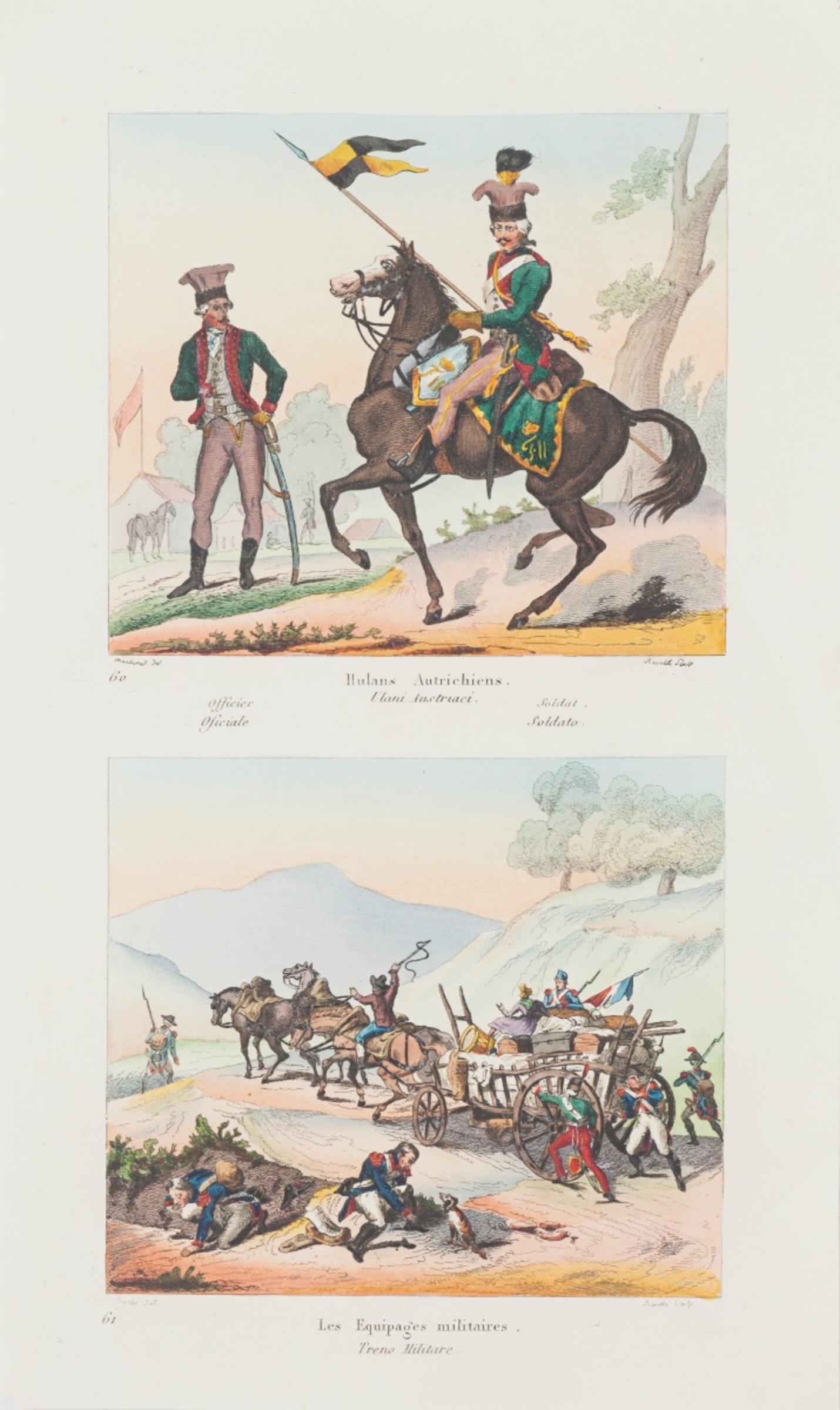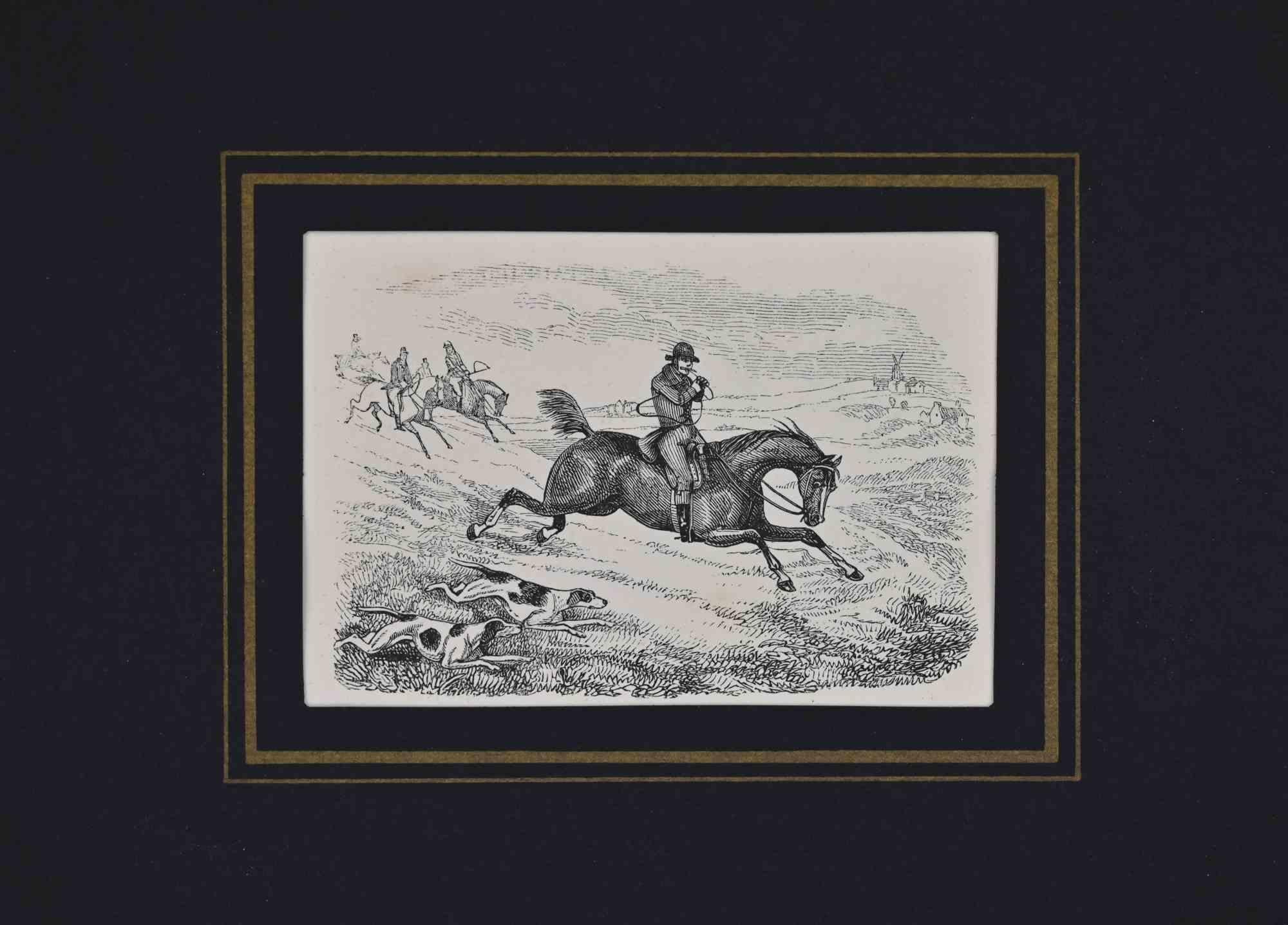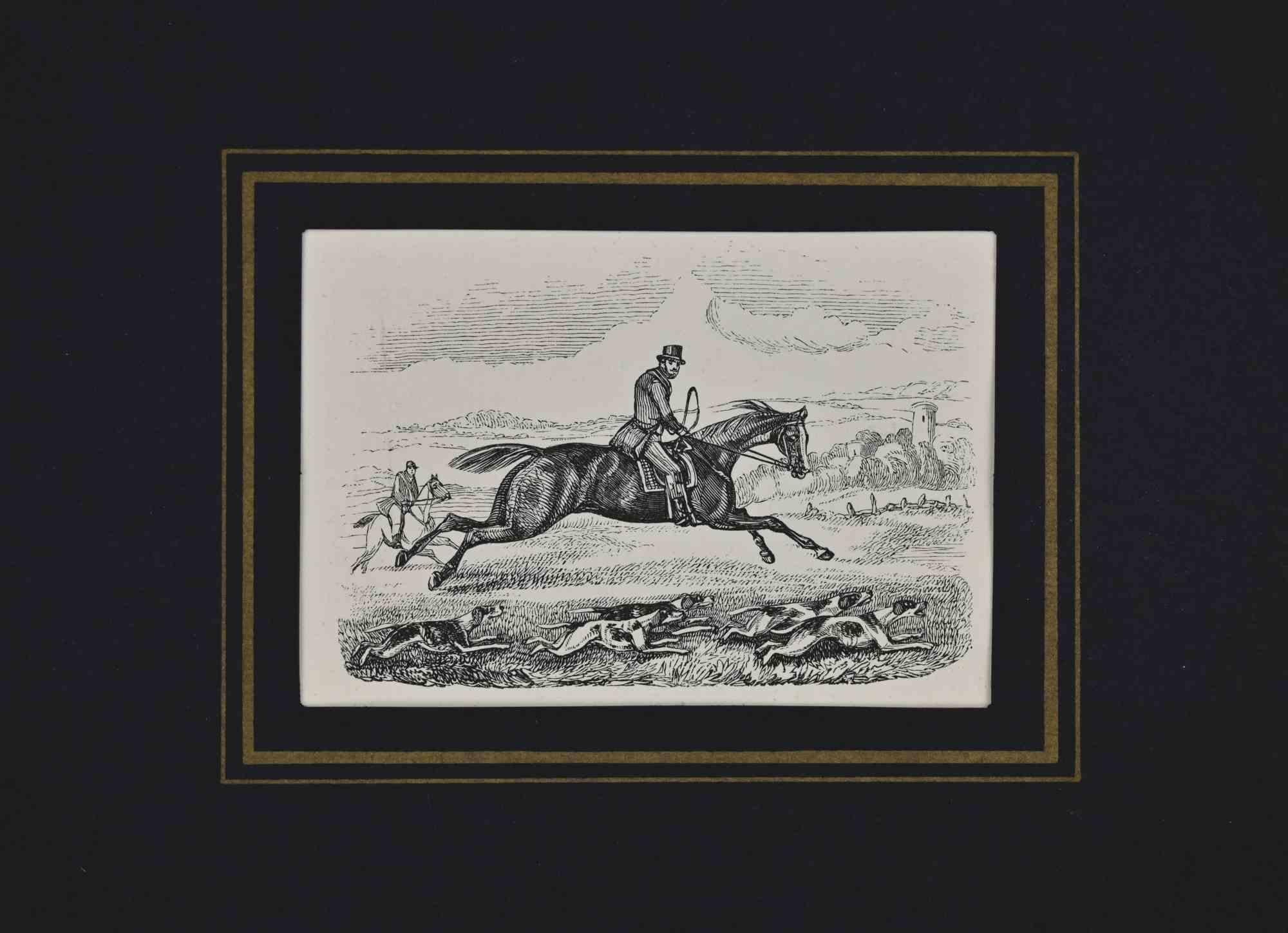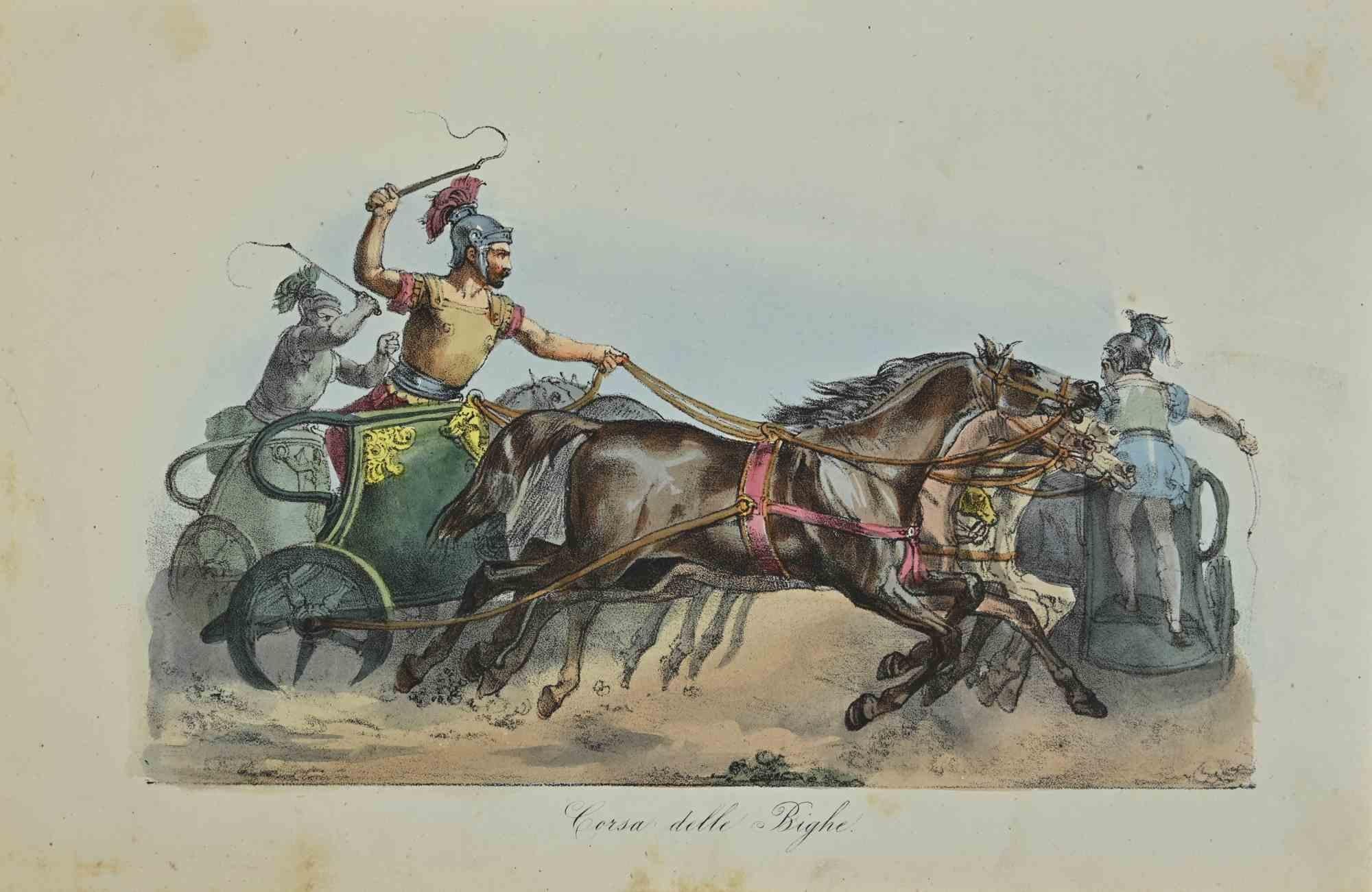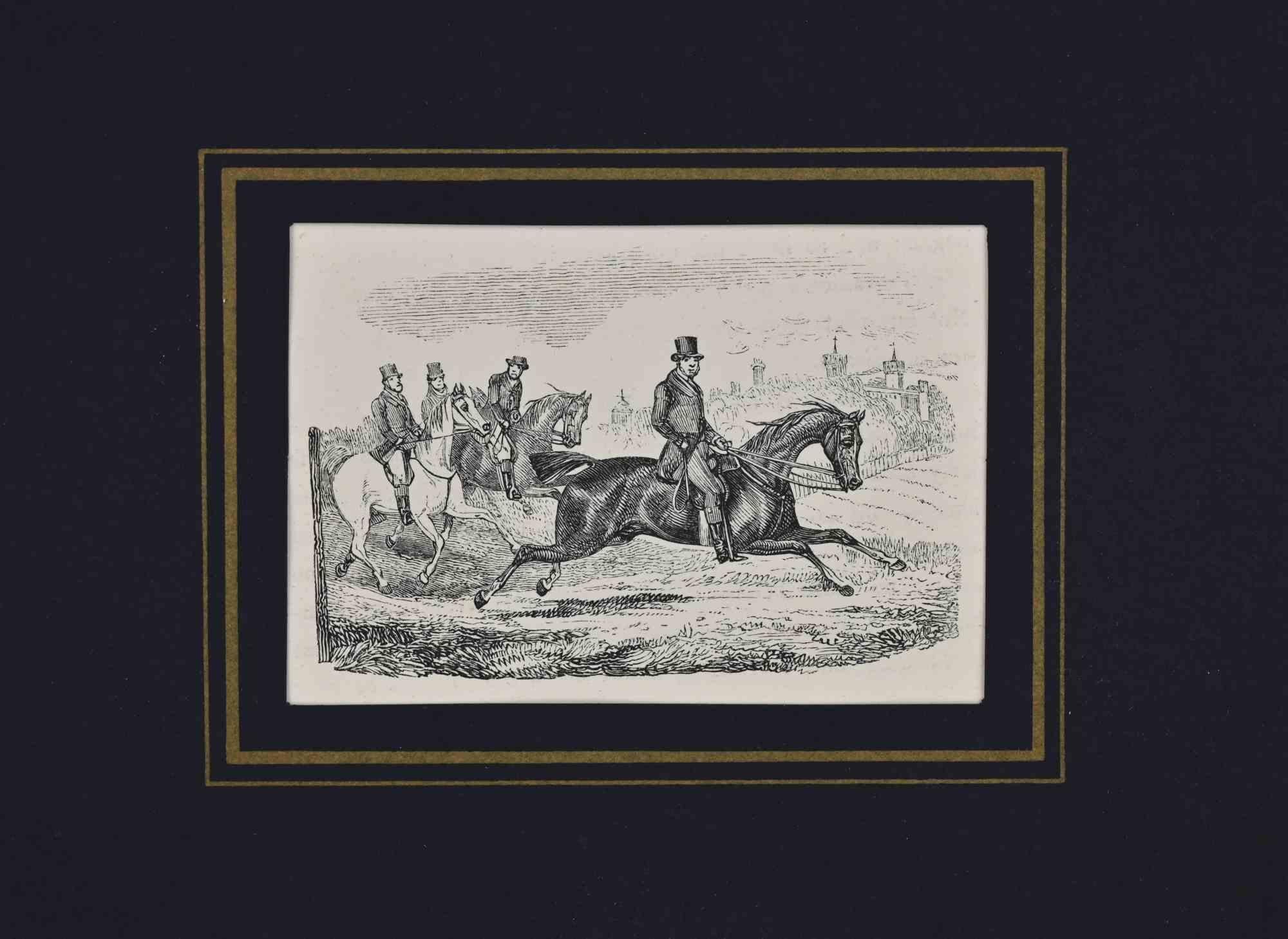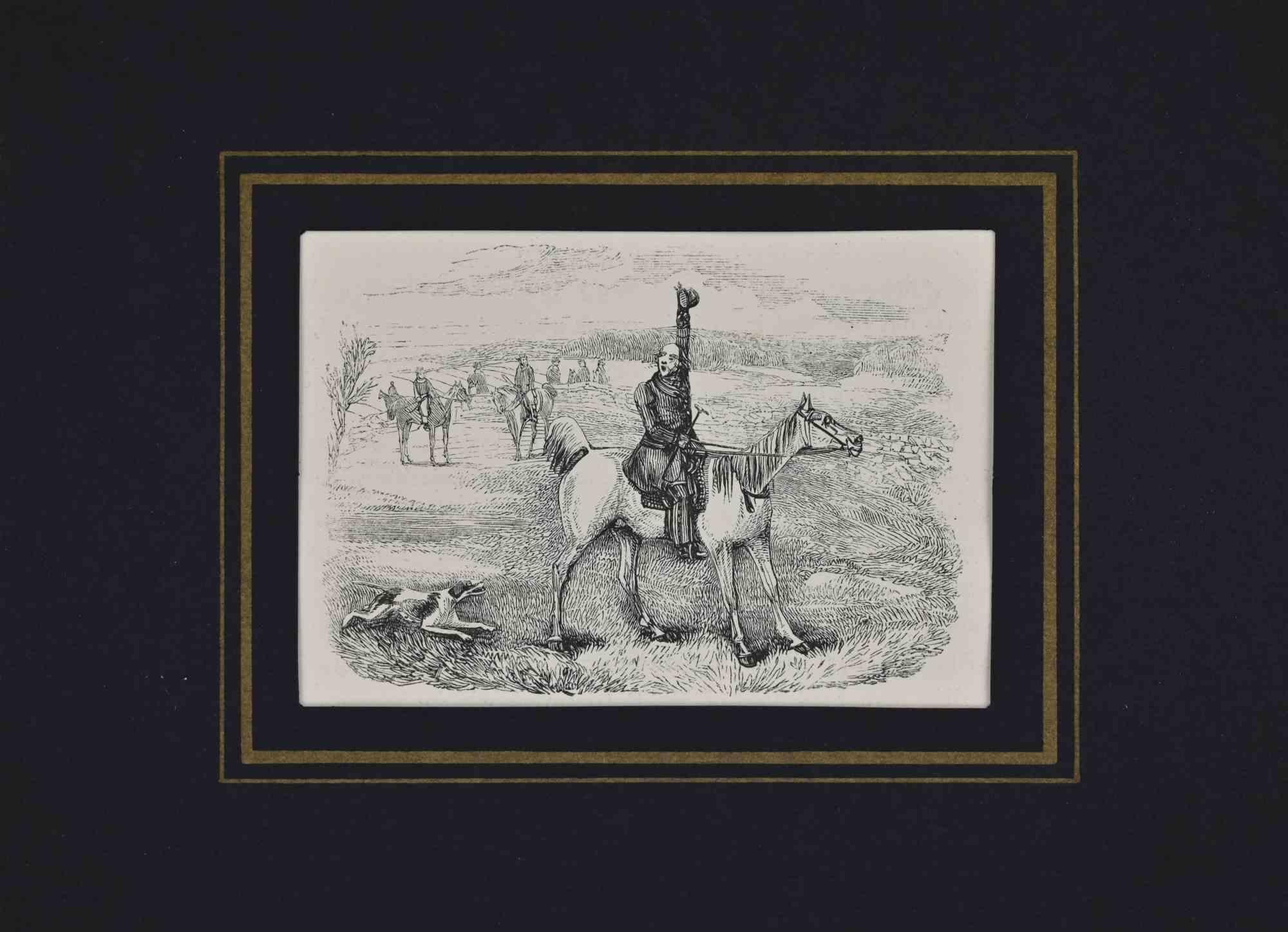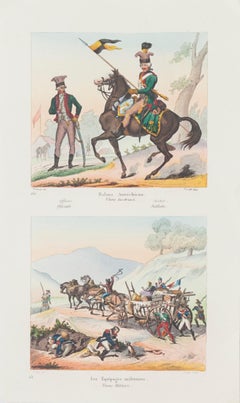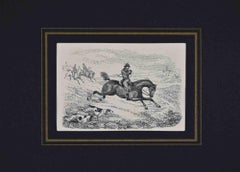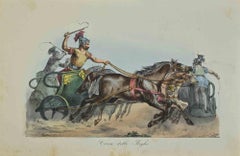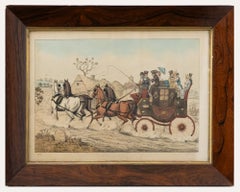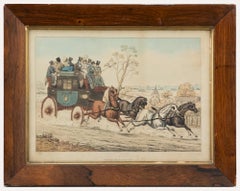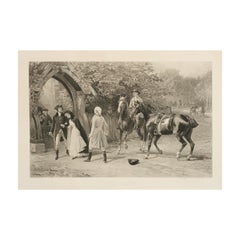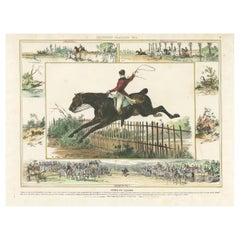Items Similar to Riding - Original Lithograph - 19th Century
Want more images or videos?
Request additional images or videos from the seller
1 of 5
UnknownRiding - Original Lithograph - 19th Century19th Century
19th Century
$270.58
$360.7725% Off
£196.95
£262.6025% Off
€225
€30025% Off
CA$368.28
CA$491.0425% Off
A$411.95
A$549.2625% Off
CHF 214.38
CHF 285.8425% Off
MX$5,071.19
MX$6,761.5925% Off
NOK 2,727.34
NOK 3,636.4625% Off
SEK 2,558.79
SEK 3,411.7125% Off
DKK 1,712.30
DKK 2,283.0725% Off
Shipping
Retrieving quote...The 1stDibs Promise:
Authenticity Guarantee,
Money-Back Guarantee,
24-Hour Cancellation
About the Item
Riding is an original print realized by an Anonymous artists of the 19th Century.
Mixed colored lithograph.
Good conditions except for some prepared rips.
This lithograph represents men riding horses. The artwork is depicted through harmonious colors in a well-balanced composition.
- Creation Year:19th Century
- Dimensions:Height: 18.51 in (47 cm)Width: 25.6 in (65 cm)Depth: 0.04 in (1 mm)
- Medium:
- Movement & Style:
- Period:
- Framing:Framing Options Available
- Condition:Insurance may be requested by customers as additional service, contact us for more information.
- Gallery Location:Roma, IT
- Reference Number:Seller: M-1178841stDibs: LU65037894102
About the Seller
4.9
Platinum Seller
Premium sellers with a 4.7+ rating and 24-hour response times
1stDibs seller since 2017
7,571 sales on 1stDibs
Typical response time: 2 hours
- ShippingRetrieving quote...Shipping from: Grasse, France
- Return Policy
Authenticity Guarantee
In the unlikely event there’s an issue with an item’s authenticity, contact us within 1 year for a full refund. DetailsMoney-Back Guarantee
If your item is not as described, is damaged in transit, or does not arrive, contact us within 7 days for a full refund. Details24-Hour Cancellation
You have a 24-hour grace period in which to reconsider your purchase, with no questions asked.Vetted Professional Sellers
Our world-class sellers must adhere to strict standards for service and quality, maintaining the integrity of our listings.Price-Match Guarantee
If you find that a seller listed the same item for a lower price elsewhere, we’ll match it.Trusted Global Delivery
Our best-in-class carrier network provides specialized shipping options worldwide, including custom delivery.More From This Seller
View AllRider - Original Lithograph - 19th Century
Located in Roma, IT
Rider is an original Hand-colored lithograph on paper realized by an Anonymous artist of the XIX century.
Titled on the lower center. Signed on the plate on the lower left.
Includ...
Category
19th Century Old Masters Figurative Prints
Materials
Lithograph
$198 Sale Price
25% Off
Gentleman Riding a Horse - Lithograph - 19th Century
Located in Roma, IT
Lithograph realized in 19th Century.
In very good condition, it is matted in a black mat.
Category
19th Century Modern Figurative Prints
Materials
Lithograph
Gentleman Riding a Horse - Lithograph - 19th Century
Located in Roma, IT
Lithograph realized in 19th Century.
In very good condition, it is matted in a black mat.
Category
19th Century Modern Figurative Prints
Materials
Lithograph
Uses and Customs - Horsing Ride - Lithograph - 1862
Located in Roma, IT
Uses and Customs - Horsing Ride is a lithograph on paper realized in 1862.
The artwork belongs to the Suite Uses and customs of all the peoples of the universe: " History of the gov...
Category
1860s Modern Figurative Prints
Materials
Lithograph
$198 Sale Price
25% Off
The Departure - Lithograph - 19th Century
Located in Roma, IT
Lithograph realized in 19th Century.
In very good condition, it is matted in a black mat.
Category
19th Century Modern Figurative Prints
Materials
Lithograph
Gentleman Riding a Horse - Lithograph - 19th Century
Located in Roma, IT
Lithograph realized in 19th Century.
In very good condition, it is matted in a black mat.
Category
19th Century Modern Figurative Prints
Materials
Lithograph
You May Also Like
After Henry Alken - Early 20th Century Lithograph, An Awkward Corner
Located in Corsham, GB
A crisp early 20th century lithograph with hand colouring, after English painter and engraver Henry Thomas Alken (1785-1851). The scene shows a period coaching party taking an awkwar...
Category
20th Century Figurative Prints
Materials
Lithograph
$268 Sale Price
20% Off
After Henry Alken - Early 20th Century Lithograph, Nearing the Journey's End
Located in Corsham, GB
A crisp early 20th century lithograph with hand colouring, after English painter and engraver Henry Thomas Alken (1785-1851). The scene shows a period coaching party near their journ...
Category
20th Century Figurative Prints
Materials
Lithograph
Antique Equestrian Print, Heywood Hardy Engraving "Too Late"
By Heywood Hardy
Located in Oxfordshire, GB
Equestrian Print, Heywood Hardy.
A fine photogravure after the original painting by Heywood Hardy titled 'Too Late'. The 'romantic' print depicts a young couple leaving the church w...
Category
Antique 1880s French Sporting Art Sports Equipment and Memorabilia
Materials
Paper
Antique Print of a Horse Race with Different Scenes
Located in Langweer, NL
Antique print titled 'Équitation Francaise 1834 (.) Course au Clocher (.)'. Original lithograph of a horse race. Published by Ch. Motte, circa 1830.
Category
Antique Mid-19th Century Prints
Materials
Paper
$412 Sale Price
30% Off
19th century color lithograph horses figures dynamic landscape
By Currier & Ives
Located in Milwaukee, WI
"The Race for the American Derby (Belmont Stakes)" is an original hand-colored lithograph published by Currier & Ives. It depicts three racehorses and their jockeys running in the Belmont Stakes. The caption for this lithograph says, "Spartan. Bramble. Duke of Magenta. Jerome Park, June 8th 1878. Mr. Geo. Lorillard's Duke of Magenta.....Hughes, 1....Messrs.Dwyer Bro's Bramble......Fisher, 2....Mr. P. Lorillard's Spartan.....Barrett, 3..... TIME 2:43 1/2."
12 7/8" x 16 7/8" art
21 7/8" x 25 7/8" frame
Currier & Ives produced their prints in a building at 33 Spruce Street where they occupied the third, fourth and fifth floors. The third floor was devoted to the hand operated printing presses that were built by Nat's cousin, Cyrus Currier, at his shop Cyrus Currier & Sons in Newark, NJ. The fourth floor found the artists, lithographers and the stone grinders...
Category
1870s Animal Prints
Materials
Lithograph
Antique Equestrian Print, Samuel Edmund Waller, Twixt Love and Duty, Photogravur
Located in Oxfordshire, GB
Equestrian print, S.E. Waller.
A fine photogravure after the original painting by Samuel Edmund Waller titled 'Twixt Love And Duty'. The 'romanti...
Category
Antique 1880s French Sporting Art Sports Equipment and Memorabilia
Materials
Paper
